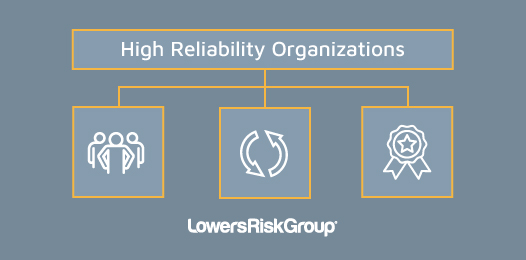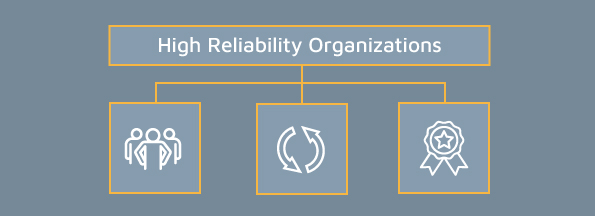
3 Essential Domains of High Reliability Organizations

High Reliability Organizations (HROs) achieve such a status through persistent and detailed efforts to improve outcomes, even seeking “perfect reliability.” But, how do you get there from where you are?
Chassin and Loeb, writing about healthcare, have summarized the requirements into three broad domains: leadership, process, and culture. The approach these authors describe is intended to help hospitals and other healthcare organizations adopt HRO principles and performance, but it applies equally well to other types of organizations. All complex organizations seeking to improve outcome quality and reliability will have to scrutinize the same domains and begin to install changes.
1. Leadership
Chassin and Loeb begin with the idea that leaders in the organization must be the first to understand, and support the principles of the HRO. We have often referred to this “tone from the top” as critical for providing legitimacy to efforts to reform the organization in any significant way. It is based on leaders modeling the behaviors, and goals they seek to get other staff to emulate, but also requires leaders to act on situations and issues as if the HRO characteristics matter.
However, “leadership” in this context includes not only the Board, C-suite officers, and upper management, it also includes team/ section leaders whose focus is narrow or limited (more tactical than strategic)but whose day-to-day activities propel the organization’s operations. This is consistent with the HRO principle that “experts” include people who are very close to some aspect of operations so that they acquire authority by their knowledge, and experience, not by their position in a formal hierarchy. The goal is to push support for HRO down the ladder.
2. Process
Well-known process improvement programs like Six Sigma are vital for self-conscious organizations seeking to improve efficiency, accuracy, and reliability of process outcomes. HROs persistently improve processes without ever reaching a “good enough” status. The HRO continuously learns from failures or less than “perfect” outcomes and seeks to improve.
3. Culture
The HRO is typified by resilience, meaning that it adapts to failures over time to improve continuously. A crucial source of resilience is the culture of the organization in internalizing principles of the HRO, from top to bottom. Every single member of the organization must take responsibility for achieving the mission, viewing every operational component as important and subject to improvement.
It is difficult to see how any organization could achieve HRO performance without a deeply embedded culture supporting HRO principles. When every staff member’s mind is geared toward implementing HRO principles, performance, and response to failures, at the spot where a problem does occur it is communicated inward and upward so steps to prevent future problems can develop. Any impediment to upward communication, such as lack of channels or managers who are threatened by the notion that they should listen to subordinates, breaks the cultural bonds needed to make the HRO work.
For more information about how you can develop HRO capabilities in your organization, read through our latest whitepaper, Building a High Reliability Organization.
ABOUT THE AUTHOR